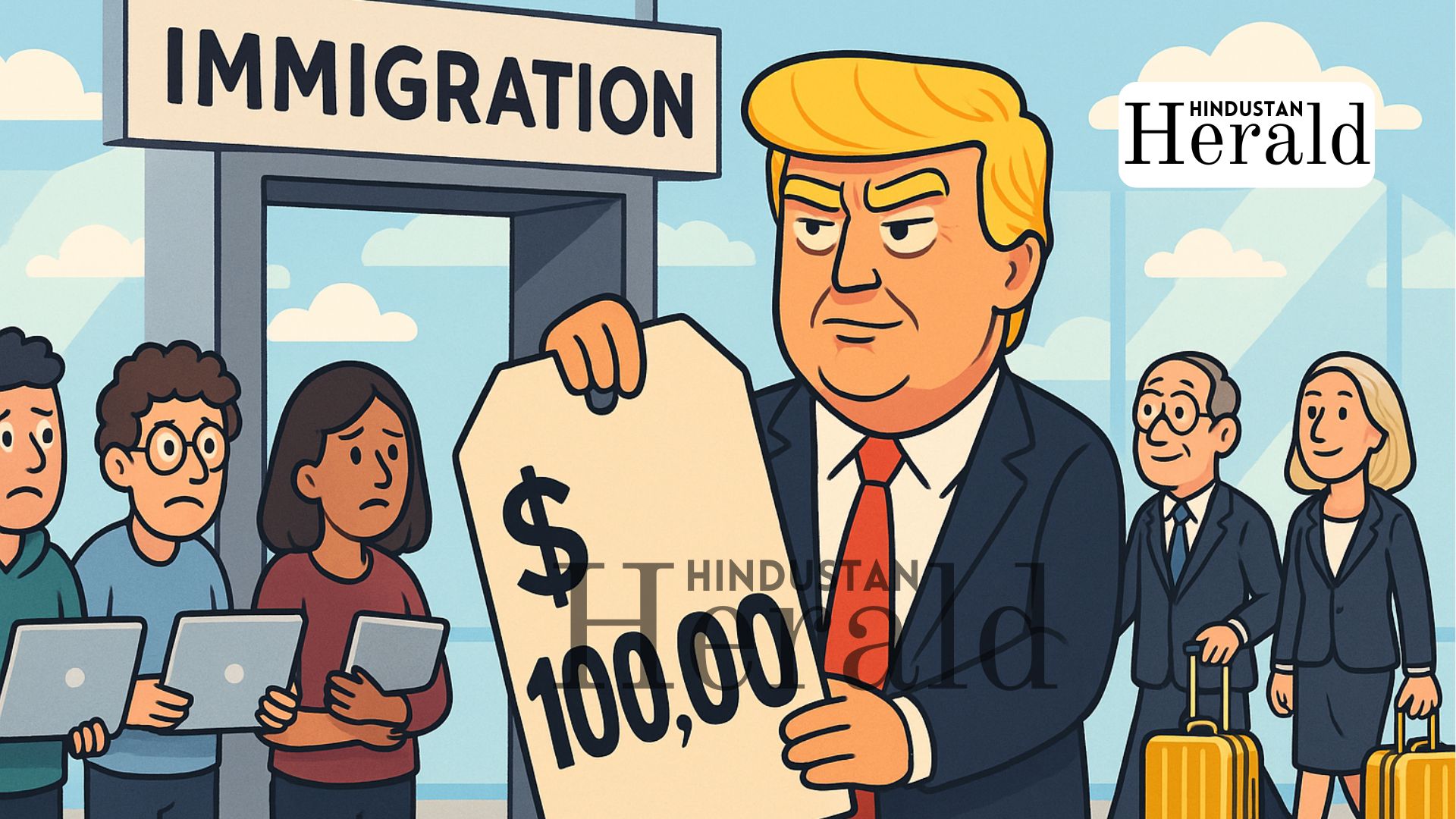New Delhi, September 20: Donald Trump has thrown a thunderbolt into America’s immigration system, slapping a $100,000 annual fee on every H-1B visa application. The decision, signed off in a late-night presidential proclamation, is already rattling tech firms in Silicon Valley, outsourcing giants in Bengaluru, and tens of thousands of young Indian engineers who once saw the H-1B as their ticket to the American dream.
A Stunning Fee Hike
Until yesterday, an employer needed just a few hundred dollars to enter a worker into the H-1B lottery. The standard registration cost stood at $215. Today, the price tag is nearly 500 times higher.
The new rule is blunt no company can bring a foreign worker into the United States on an H-1B unless it pays the $100,000 fee in advance. The White House says the restriction will run for a year, though the President can extend it. Officials insist this is about protecting U.S. jobs, a familiar Trump theme. But immigration attorneys and industry lobbyists are calling it what it is a financial wall around America’s most important skilled-worker visa.
“It’s a gut punch,” said a senior executive at an Indian IT services firm, who asked not to be named while his company studies the fine print. “You’re looking at hundreds of millions of dollars in additional costs if we continue business as usual.”
Raising Wages, Raising Barriers
The proclamation doesn’t stop at the fee. Trump has also ordered the Labor Department to revise how prevailing wages are calculated for H-1B workers, a technical but crucial rule. At its core, the move is meant to force companies to pay foreign hires salaries closer to, or higher than, what American workers in the same jobs make.
The politics of this are clear. Trump has long accused tech companies of using the visa program to import cheaper labor, sidelining American workers. Economists point out that the story is more complicated the U.S. has a chronic shortage of highly trained engineers, particularly in fields like AI and cybersecurity, and many of those positions are filled by Indian talent. But nuance rarely drives policy in Washington these days.
A Different Door For the Rich
If the new rules choke off opportunities for middle-class engineers, Trump has created an entirely different path for the ultra-wealthy. Alongside the H-1B overhaul, he unveiled two fresh visa categories
- The Gold Card: costs $1 million, promises a fast-track to U.S. citizenship.
- The Platinum Card: costs $5 million, and lets you spend nine months a year in the U.S. without paying tax on foreign income.
It is, in short, a system that slams the brakes on skilled migration while opening the gates wide for those who can write the biggest cheques.
Legal Battles Brewing
Lawyers are already sharpening their arguments. Immigration policy this sweeping usually requires legislation or months of formal rulemaking. Instead, Trump has reached for the presidential proclamation, a tool with limits. According to Reuters, business groups are likely to challenge the legality of imposing such steep fees overnight.
Even if the courts take months to decide, the chilling effect is immediate. Smaller American firms, the startups and consultancies that cannot afford $100,000 per worker, may simply give up on hiring abroad. Large Indian IT companies, which send thousands of engineers to U.S. clients every year, will be forced to recalculate whether those contracts still make sense.
India’s High Stakes
No country has more to lose from this than India. Roughly three out of every four H-1B visas go to Indian nationals, most of them young software developers and engineers. For decades, this pipeline has been more than just a migration story. It has been the foundation of India’s IT boom, with returning workers bringing back capital, expertise, and global networks.
Now, that pipeline looks uncertain. If the new fee holds, many Indian firms will keep projects offshore, investing more in delivery centres at home rather than sending workers to American soil. In the short term, that might mean more tech jobs staying in Bengaluru or Hyderabad. In the long term, it risks weakening the Indian presence inside the U.S. technology ecosystem, the very presence that helped Silicon Valley dominate in the first place.
Trump’s Broader Vision
Put together, the new visa rules sketch out a worldview that is unmistakably Trump’s America as fortress for workers he wants to protect, America as playground for millionaires he wants to attract. Everyone else is left jostling in between.
The White House insists there will be exceptions. If the Secretary of Homeland Security believes hiring a foreign worker serves the “national interest,” that H-1B can still be approved. But with the price tag set so high, even those exceptions may prove hollow.
The Road Ahead
The changes are set to last one year, unless extended. But few in Washington believe Trump intends this as a short-term experiment. Rather, it looks like the opening shot in a broader attempt to remake America’s immigration system around wealth and protectionism.
For Indian engineers, the message is stark. The road to Silicon Valley just became harder, costlier, and perhaps narrower than ever before. For U.S. companies, the choice is equally grim pay through the nose, fight it out in court, or shift more work offshore.
One thing is certain. The H-1B visa, once seen as a bridge between America’s demand for talent and India’s deep pool of skills, is now at the center of a political storm that could redefine the future of global tech migration.
Stay ahead with Hindustan Herald — bringing you trusted news, sharp analysis, and stories that matter across Politics, Business, Technology, Sports, Entertainment, Lifestyle, and more.
Connect with us on Facebook, Instagram, X (Twitter), LinkedIn, YouTube, and join our Telegram community @hindustanherald for real-time updates.
Specializes in South Asian geopolitics and global diplomacy, bringing in-depth analysis on international relations.






